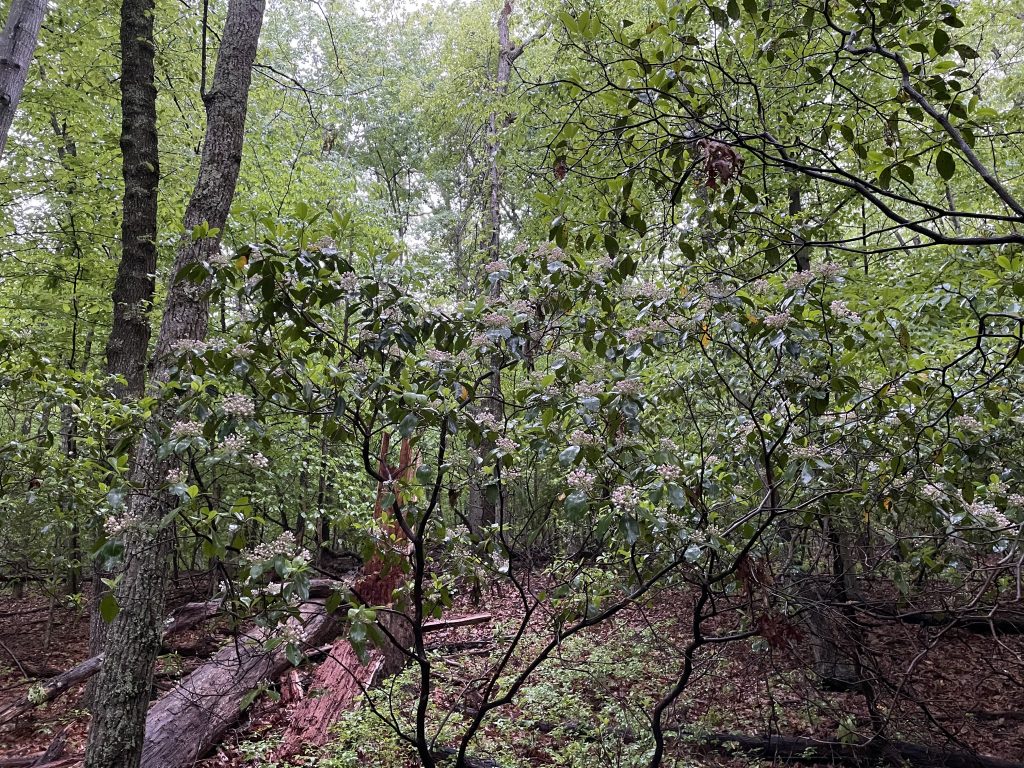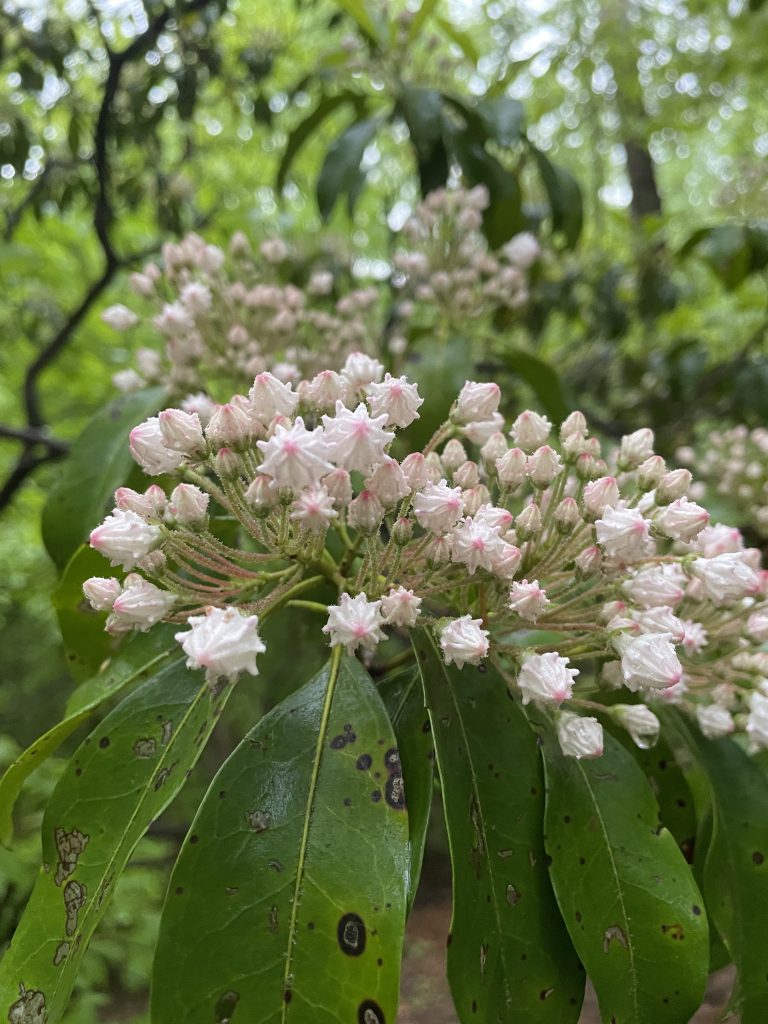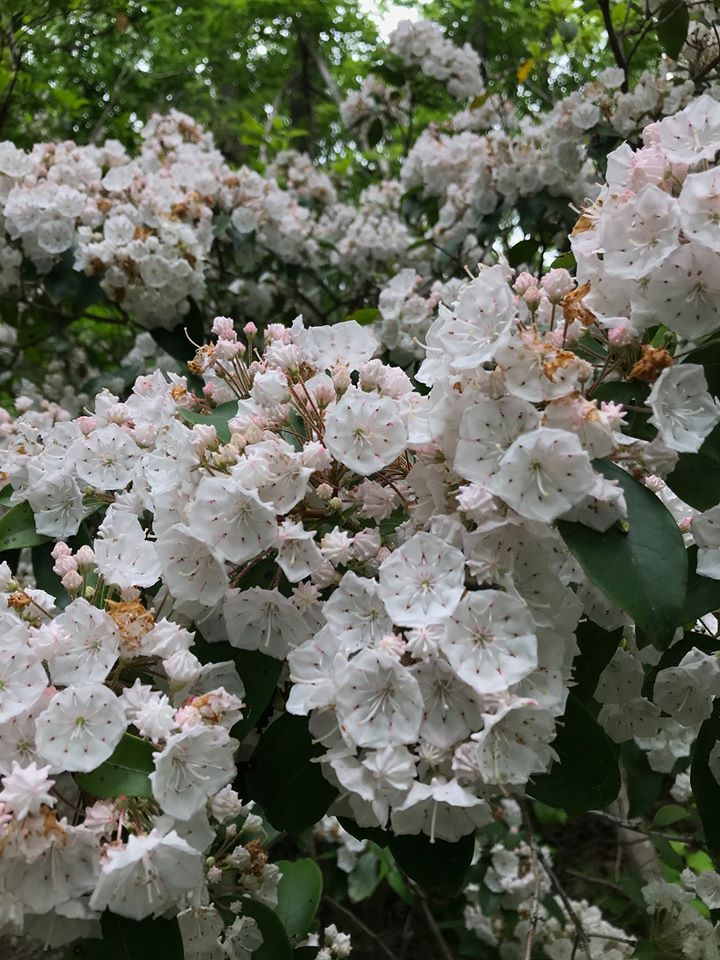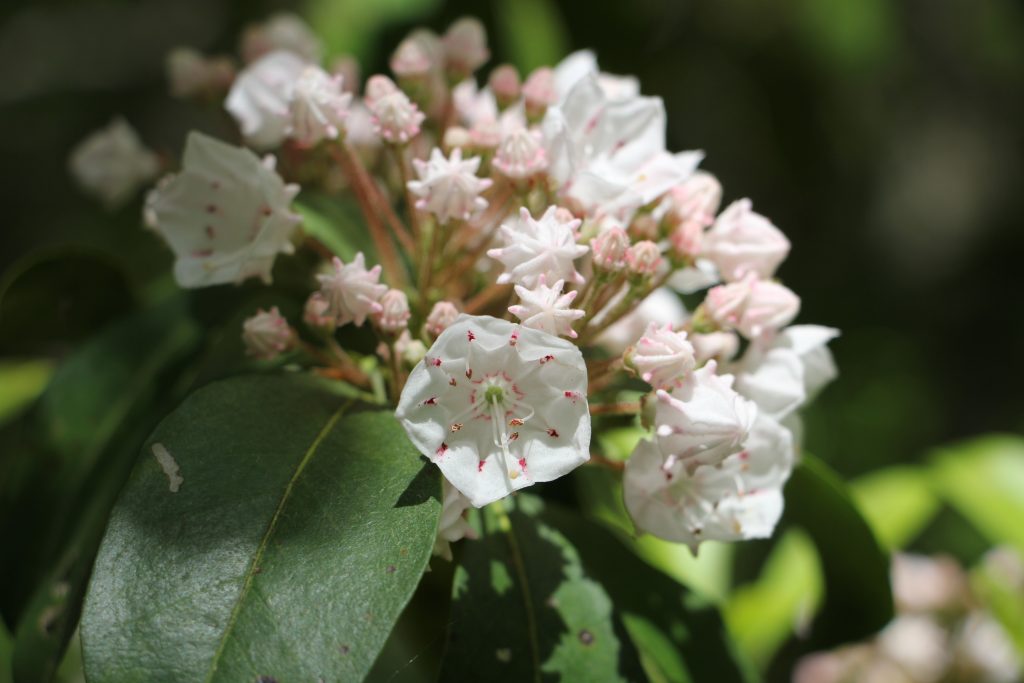For this week’s #sciencesaturday we are highlighting a species that has just started to bloom on the Preserve: Mountain laurel (Kalmia latifolia). Mountain laurel is one of my favorite plant species in Virginia for a number of reasons. It has a whimsical growth structure of crooked and swooping branches, forming a dense rounded crown of glossy, dark-green leaves. Its bark is distinctive, made up of long, thin strips of reddish-brown paper-like bark all layered on top of each other. Hiking on a trail that winds through mountain laurel seems to turn into almost a magical space; cool shadows held into place by its tangled branches and sweet summer scents wafting from its flowers.

While you may be familiar with its evergreen leaves, the flowers that have just begun to bloom are well worth taking a hike on the Preserve’s Fern Hollow Loop to see. The buds are conical, fluted, and range from white to deep pink in color. When the buds open, the petals (also known as corollas, meaning all the petals of a flower), look like geometric, five-sided parasols.



Before the buds open, they come in curious club shapes, with knobs surrounding the bud. As the flowers open, the function of these knobs become apparent. The anthers (or, pollen carrying part of the flower) are nestled and held in each of these knobs. This is a unique strategy in pollination, as many flower structures have their anthers completely exposed, able to sprinkle pollen at the slightest touch of any pollinating visitor.
Mountain laurel, however, keeps its anthers tucked away, thus protecting pollen from rain and wind. When a pollinator visits the flowers (mountain laurel is predominantly pollinated by bumblebees) in search of nectar, the weight acts as trigger, causing the stem of the anther to spring out of it’s pocket and gently hit the pollinator, dusting it with pollen.
Check out this video from the Royal Botanic Garden Edinburgh, for a depiction of the pollination process
As you hike through the Preserve on your next visit, see if you can spot which flowers have been pollinated on our mountain laurel shrubs.
